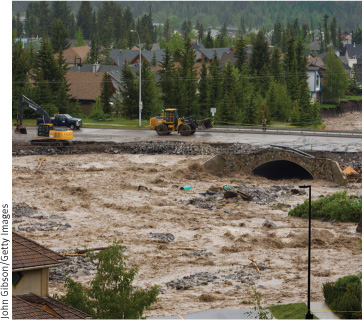Uncertainty, Risk, and Private Information
20
That risk is a key feature of the economy and that most people are risk-averse
Why diminishing marginal utility makes people risk-
averse and determines the premium they are willing to pay to reduce risk How risk can be traded—
the risk- averse can pay others to assume part of their risk How exposure to risk can be reduced through diversification and pooling
The special problems posed by private information—when some people know things that other people do not
!worldview! A TOUGH TIME FOR INSURERS?

WORLD INSURERS HAVE FACED tough times in the twenty-
According to the Insurance Information Institute, the industry’s worst year on record was 2005. That year saw flooding in India, a devastating earthquake in Pakistan, a train derailment in Japan, and three major hurricanes striking the United States. Hurricane Katrina was the single worst natural disaster ever to hit the United States: over 1400 dead, nearly US$50 billion in losses to private insurers, and US$23 billion in losses to the government’s National Flood Insurance Program. Moreover, these figures significantly understate the true level of loss because many people were uninsured or underinsured.
For Canadian insurers, 2013 was a record-
Anyone who lives in an area threatened by natural disasters knows that uncertainty is a feature of the real world. Up to this point, we have assumed that people make decisions with knowledge of exactly how the future will unfold. (The exception being health insurance decisions, which we discussed in Chapter 19.) In reality, people often make economic decisions, such as whether to build a house in a coastal area, without full knowledge of future events. As the victims of recent catastrophes have learned, making decisions when the future is uncertain carries with it the risk of loss.
It is often possible for individuals to use markets to reduce their risk. For example, flood victims who had insurance were able to receive some, if not complete, compensation for their losses. In fact, through insurance and other devices, the modern economy offers many ways for individuals to reduce their exposure to risk.
However, a market economy cannot always solve the problems created by uncertainty. Markets do very well at coping with risk when two conditions hold: when risk can be reasonably well diversified and when the probability of loss is equally well known by everyone. Over the past several years, the significant increase in extreme weather events has led many insurers to sharply reduce coverage of weather-
In this chapter we’ll examine why most people dislike risk. Then we’ll explore how a market economy allows people to reduce risk at a price. Finally, we’ll turn to the special problems created for markets by private information.